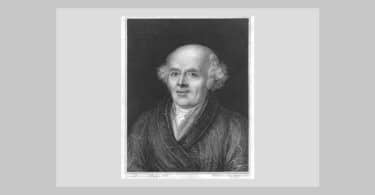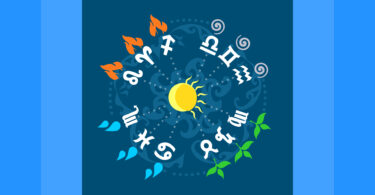At the same time that Röschlaub embarked on his quest for a true science of life and health, a compatriot, Dr. Samuel Hahnemann, who had quit his medical practice earlier in protest against the lack of science and efficacy of the Old School and the empty ‘metaschematisms’ of the academic ‘doctors’, had also begun a similar quest for a true system of medicine. Hahnemann’s essay of 1796 and subsequent writings, all part of an extended Organon der Heilkunst, laid down the basic foundation for a distinction between the sustentive (Lebenserhaltungskraft) and generative (Erzeugungskraft) sides of the living principle, between physic, operating under the natural healing law of opposites (contraria contrarius), and medicine proper, operating under the natural curative law of similars (similia similibus), and between disease, a dynamica impingement on the generative power (degeneration or palingenesis) akin to a sexual act within the context of a disorder, and a derangement of the sustentive power, or disturbance of homeostasis. Hahnemann further established various principles for the application of the law of similars, including a crucial distinction between diseases of a fixed nature or Wesen (tonic diseases), and those of a variable nature, the basis for the later discovery by some of his followers of a dual remedy prescribing, each remedy addressing one ‘side’ of disease, the tonic and pathic.
Details of Hahnemann’s Heilkunst
Hahnemann argued, logically, that the material effects of disease could not be their own cause (causa morbii). Disease was instead a dynamic affection of the generative power occasioned by a spirit-like morbid entity (Krankheitswesen) that had the power to impinge upon the generative power of a human (Menschenkraftwesen), acting as malignant ‘excitants’ in the Brunonian sense. However, this power depended on a susceptibility or receptivity (negative resonance) caused by weakening of the life force from various malignities (Brown’s underlying diathesis). The disease process consists of a dual action: the initial action (eerstwirkung) of the disease agent, which impinges upon the generative power, which is generally imperceptible (such as the initial infection by the measles microbe), and the counter or after-action (gegenwirkung, nachwirkung) of the sustentive power, which produces the various sufferings the patient complains about.
While the fixed or tonic diseases could be identified by an underlying cause or state of mind, along with a curative medicine based on fixed principles, the variable or pathic diseases could only be identified, along with their curative medicine, through the symptoms (suffering or “pathos”) produced by the disease in the patient. However, such an approach was problematic as a person could have more than one disease at a time. This then required a principle to organize the symptoms into a whole (Inbegriff) correspondent to a given disease state. Just as each tonic disease has a unique state of mind disturbance, so does each pathic disease contain a unique disturbance of the thermal principle in man. This approach to pathic diseases Hahnemann termed homeopathy (from the Greek homois and pathos, or similar suffering).
The tonic diseases were to be found in various jurisdictions: homotoxic (toxins), homogenic (physical and emotional traumas), pathogenic, iatrogenic and ideogenic (spiritual diseases engendered by false belief, which he termed the “highest disease” – as compared to the ‘deep’ and ‘deepest’ pathic diseases). In contrast, the pathic diseases are found in reversible layers (‘layers prescribing’).
Because the pathic diseases generally arise out of the more primary constant (tonic) diseases, such as the chronic diseases that arise out of the chronic miasms, Hahnemann also laid down the principle that the tonic diseases should be treated first, and second, any remaining pathic diseases.
While the curative medicines for the tonic diseases could be largely determined by the principle linking disease and medicinal agent for the relevant jurisdiction, pathic disease treatment required a corresponding image of derangement of the Leib (executive organ of the Kraftwesen) so that this could be matched to the image presented by the patient. The problem lay in that a patient could present with more than one disease, each with a particular grouping of symptoms, but how could the practitioner link which symptoms manifest disorder(s) and those ascribable to disease, to which disease, of the several possible at a given time in the patient, and finally, how could one trace any symptoms so identified to their origins? Here Hahnemann’s genius adduced a living experience (Erlebnis) of the essence of a natural substance (Naturwesen) by way of a human Wesen, and in doing so, also provided the very practical scientific basis for removing the barrier set up by Kant and the intellect between observer and observed, by invoking the cognitive capacity of Goethe’s Gemüt. Goethe himself, later in his life, recognized that Hahnemann had found a way to apply to and through Human nature what he was doing with Mother Nature.
In the light of difficulties treating more complex cases, Hahnemann undertook further research and developed a theory of chronic miasms [the original STD’s], which are fixed nature diseases of the pathogenic type (originally infectious, but also inherited) which give rise to all the (secondary) chronic diseases, which are pathic in nature.
Hahnemann also gave indications as to when the practitioner could tell that the disease had been cured by the similar medicine and healing was underway (the complete process termed “heilen” or remediation). Constantine Hering, often called the Father of Homeopathy in the US, further developed these guidelines, which are often referred to as “Hering’s Law or Principles” :
- from less vital to more vital organs
- in the case of pain, from above down
- in the same direction as the natural disease process
This was later amended in the latter half of the 19th C. by Dr. James Tyler Kent who noticed that when disease was suppressed or several groups of symptoms (diseases) developed in a patient over time, that the remedial process proceeded in the reverse order of their emergence. This provides the basis for a sequential treatment of diseases.
If some symptoms become worse some time after the similar medicine or there is even a return of old symptoms, essentially in chronic, complex cases, this Hahnemann identified as part of the healing process, which involves the counteraction of the sustentive power of the Dynamis against the medicine (similar ‘disease’).
While medicine had historically recognized, even into Hahnemann’s time, the law of similars (similia similibus), it was also wary of its use because of risk of harm with the improper dose, and had largely abandoned it in favor of the approach set out by Hippocrates involving the law of opposites, that is, acting to support the physis or sustentive power. Dr. Hahnemann discovered a way to sublimate the dose so that it could be rendered harmless but remain therapeutically active, what is often referred to as ‘dynamization’. Later he also discovered a way in which to potentise, or increase in dynamic power, the medicines.
Because of the use of these two laws, we have two great realms of medicine: medicine proper, (medic) which is the application of the law of similars, and physic, which is the application of the law of opposites. This gives us the mutually interactive and supportive jusrisdictions of the true Heilkundiger and Heilkünstler – physician and medician, involving physic (law of opposites) and medicine or medic (law of similars). There is also a third realm, that of therapeutic education, which involves the expansion of human consciousness through the destruction of false beliefs.






